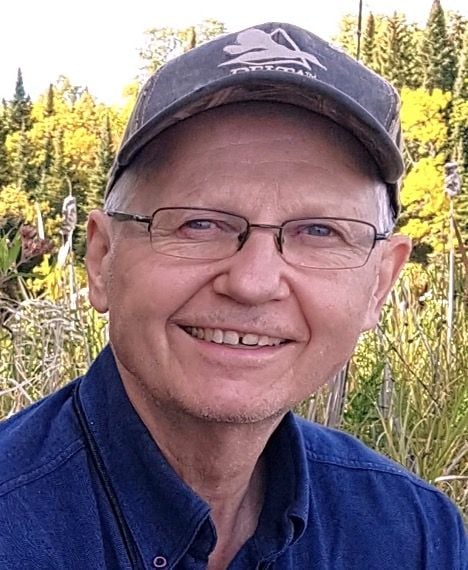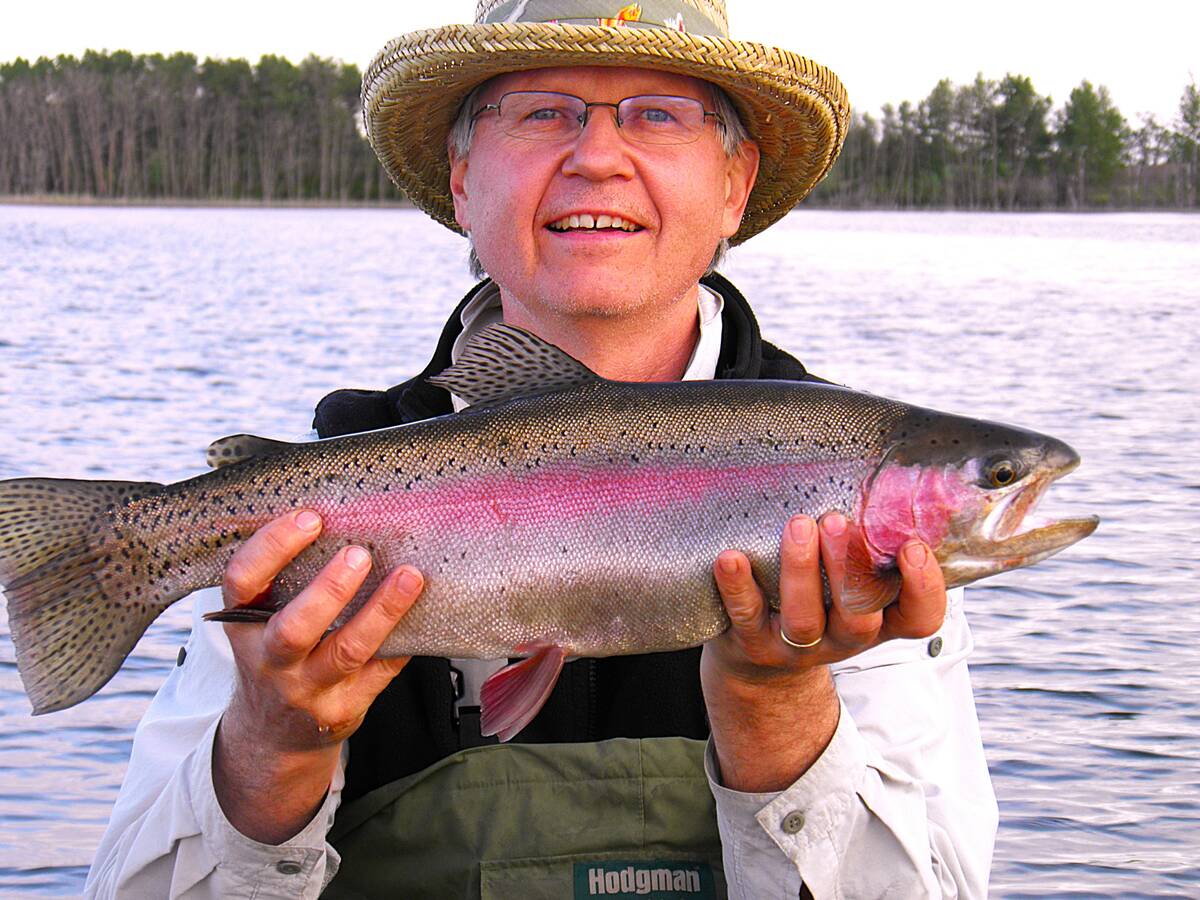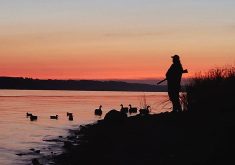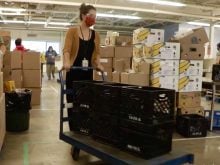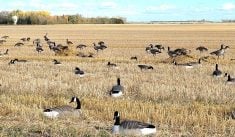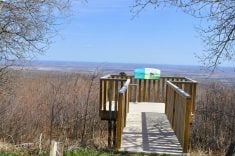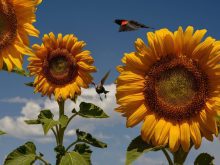A while back, my brother Robert and I made the short drive to Tokaryk Lake from his home near Lake Audy on the south side of Riding Mountain Park. The rainbow and brown trout reports were promising.
We weren’t surprised to see two other fly fishers at the landing. When we asked the customary question — “How’s fishing?” — the reply was exuberant.
“Fantastic!” they exclaimed full-throatedly.
Read Also
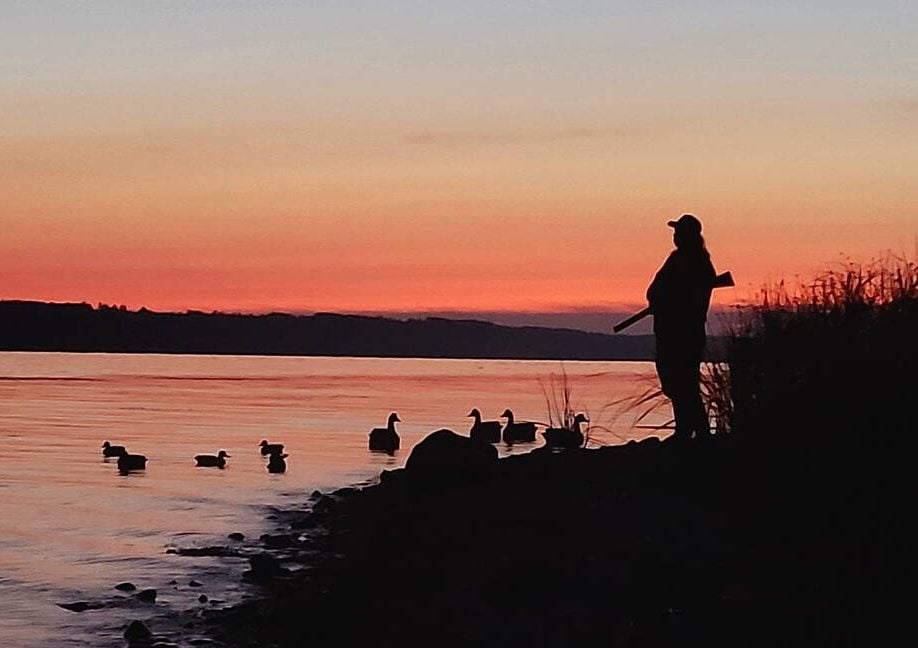
Manitoba hunting season well underway
Manitoba hunting season 2025: Sneak peeks and predictions for hunters this fall, from grouse to waterfowl to going after deer
They were from Wyoming, which hosts excellent trout fishing. So why were they all the way out here fishing our duck puddles if they had storied trout fishing opportunities back home?
Their answer was along the lines of, “We don’t get fish like this back home.”
It was a response we had previously heard from other Americans, western Canadians and Ontario residents we had encountered on the Parkland trout lakes. When it comes to trout, little Manitoba apparently punches above its weight.
The formula for big trout
Trout are insatiable eaters. Serve them an abundance of insects, leaches, freshwater shrimp and clouds of small minnows, and trout can start to grow to the point that they look like footballs with fins.
In the 1960s and ’70s, the federal government invested large sums to study the feasibility of trout farming in the food-rich ponds and lakes south of Riding Mountain National Park. Fingerlings planted in the spring could grow to over a pound (500 grams) by autumn, a good market size. These ponds almost always winterkilled. If they didn’t, though, those fish could grow to over 1,200 grams after the second summer.
The aquaculture idea fizzled because the trout often had a muddy flavour and production was variable. Some folks thought about the angling potential, but there was that pesky winterkill issue.
Lake aeration to the rescue
Today’s Parkland trout survival has been helped along by a happy accident of municipal infrastructure. According to Bruno Bruderlin, a retired provincial fisheries biologist whose career centred on western Manitoba, several water bodies in the region became more trout friendly after efforts to improve water quality for humans.
In the 1970s, some towns in southwestern Manitoba were contending with poor drinking water and high treatment costs. Intense algae blooms in their reservoirs led to strong odours and contaminants, especially during and after winter. Aeration systems were suggested to keep the lakes reasonably well oxygenated through the winter.
Imagine an aquarium bubbler, scaled up for a lake. Pipes run along the lake bed from a lake shore pump house and deliver columns of bubbles that create some open water, oxygenate it and help to vent gases that are toxic to fish.
The Killarney aerator did improve drinking water, but people were also pleased with the unexpected side benefit: the lake didn’t have winterkills any more. A reliable fishery for walleye and pike then developed. Further west, the same result played out in Kenton’s town reservoir.
With these examples to work from, the 1980s saw a period of aeration expansion, this time more focused on trout. William Lake in the Turtle Mountains became a destination because of its big trout. East Goose Lake in the Parkland town of Roblin started producing whopper trout in only two years. Word was getting out. A few more aeration lakes were added.
A community push for trout
After a few years of these successes, anglers and rural community interests in the Parkland region wanted to lend a hand – some might say a FLIPPR – to expand trout fishing even more.
A successful aeration project needs four things:
1) Capital to buy and install an aeration system,
2) Commitments to cover annual electricity and insurance costs,
3) Annual trout stocking, and
4) Catch restrictions (one-fish limit, nothing over 45 centimetres) that help to ensure lots of big trout.
FLIPPR (Fish and Lake Improvement in the Prairie Parkland Region) was a grassroots group of Parkland residents, municipalities and business partners looking to make that happen. Its vision was a “necklace” of lakes on the south and west sides of Riding Mountain National Park that would sustain exceptional trout fishing.
Ray Frey, who retired as chief warden at Riding Mountain National Park about two decades ago, was an early FLIPPR board member, project proposal writer and events volunteer. He recalls the rationale and some of FLIPPR’s early successes.
“Excellent lakes had been developed before FLIPPR. Spear Lake and Silver Beach come to mind,” said Frey. “But growing the number of lakes needed a grassroots support group.”
Bruderlin agreed. “FLIPPR organized local partners and pushed government, in a good way. We worked well together,” he said.
The province did assessments of potential lakes and, once an aeration was installed, made critical commitments to annual trout stocking and monitoring.
FLIPPR accessed funds for aeration infrastructure and installation — about $75,000 for a system nowadays — from Manitoba’s Fish and Wildlife Enhancement Fund, to which only non-government entities could apply.
The second big step was to get commitments from municipalities to run the systems, pay for annual electricity costs and include the infrastructure in their municipal liability insurance. At one point, ten municipalities were FLIPPR members.
Building on trout
It was an investment for potential economic boom in those municipalities. Parkland lakes were offering up big, hard-fighting trout, yet anglers didn’t have to break the bank to fish them. Wealthy anglers can fly to five-star lodges in Alaska or Patagonia to catch exceptional trout. The average person could now drive to Manitoba, rent a hotel room, launch a float tube, and have a fishing experience of a lifetime.
Municipalities welcomed the new fishing opportunities both for local citizens and for their tourism potential. Hotels in Roblin and Russell often filled with fly fishers in the spring and fall, otherwise quieter times for business.
One oddball example was a conclave of fly fishing dentists who gathered in Russell every September for professional training sessions, but the early mornings and evenings were left open for some trout fishing in the local hot spots.
An economic analysis commissioned by FLIPPR found that, for every dollar invested in an aeration lake, the return ranged from $7-$21.00. One example Bruderlin noted is a 30-cottage subdivision that sprang up along Tokaryk Lake after its fishery was developed.
FLIPPR also hosted Canadian Fly Fishing Championships, which attracted teams from as far away as Europe. Frey remembers that Scottish teams seemed particularly enamored with the Parkland lakes.
The annual “Bug-Chucker Cup,” a provincial event, brought fly fishers together to fish and swap stories. Proceeds from these events often went to aeration costs.
Parkland lakes today
Master angler records from recent years show that plenty of excellent angling remains, but Mother Nature has thrown curveballs at a couple of the more well-known Parkland trout lakes in the last decade.
Before aeration, only minnow species were present in these lakes. The aeration systems guaranteed trout survival, but fish managers didn’t expect that other fish might find also their way in.
One of the best Parkland spots, Tokaryk Lake, now has pike, perch and suckers. Pybus Lake, which had some exceptional rainbow trout fishing, also ended up with pike.
The 2010s included some exceptionally wet springs, and intermittent waterways may have connected some lakes to larger watersheds. This could explain how pike, perch or suckers showed up in three well-known lakes. But smallmouth bass, walleye and even catfish in West Goose Lake and East Goose Lake could only be the product of illegal stocking.
Lakes with a continental reputation for massive trout received a gut-punch from these thoughtless acts.
Perch, suckers and bass compete for food, but the biggest issue is pike. Trout lose out against this voracious predator. By comparison, walleye seem to coexist with trout.
“It’s hard to justify stocking trout in a lake when most of them become pike food,” Bruderlin wryly noted.
Turning off the Pybus Lake aeration system for two winters eliminated the pike, but following tiger trout stockings (a cross between brown and brook trout) didn’t take hold. Provincial fisheries staff that I talked to believe more recent plantings of rainbow trout will do better.
Provincial fisheries staff also report that Twin Lake, north of Roblin, continues to attract anglers seeking big tiger trout. Nearby, Persse, Tees, and McBride lakes are doing well. Antons Lake, near Minnedosa, has good populations along with family-friendly fishing docks. Patterson Lake also still produces trout that are the stuff of memories.
Although FLIPPR is not as active as it once was, provincial staff are seeing renewed local interest in improving the Parkland trout lakes. Aeration systems have been upgraded in some places, and the province has committed to enhancing trout stocking.
Fishing the trout lakes
Bruderlin is also a keen angler who has fished the Parkland for years with a fly rod and spinning gear. His basic advice is something fly fishers always say: “Match the hatch.”
In other words, assess what the fish are feeding on and use something that’s in the ballpark. Fly fishers tie up imitations for leaches, midges, damselflies, freshwater shrimp or minnows. Spin fishers can also use flies if they add some split shot to their line to aid casting, but most resort to small spinners, spoons — like a small, silver and blue Cleo — or tiny crankbaits. Bruderlin recommends hitting points, drop-offs, reed edges or other structures that may hold fish.
Avoid fishing in these lakes in the heat of summer. The trout are still catchable, but they will fight to exhaustion and often don’t survive that stress in warm water. I broke my own rule one July day and watched two released fish go belly up a few minutes later.
A family postscript
My brother, Robert, was closely associated with the Parkland lakes. It started with his fly fishing passion, but he also became FLIPPR’s first chair, a position he held until he became the member of parliament for the region.
He passed away unexpectedly last fall, but after having lived a life rich in experiences. It wasn’t my intention to bring up his contributions to the Parkland lakes when I started to write this story, but I recently heard that the municipality maintaining Patterson Lake is working on a memorial to Robert’s efforts on behalf of FLIPPR.
These days, fishing at a Parkland trout lake will be more poignant, given my memories of days of great fishing shared with a wonderful pal gone by.

